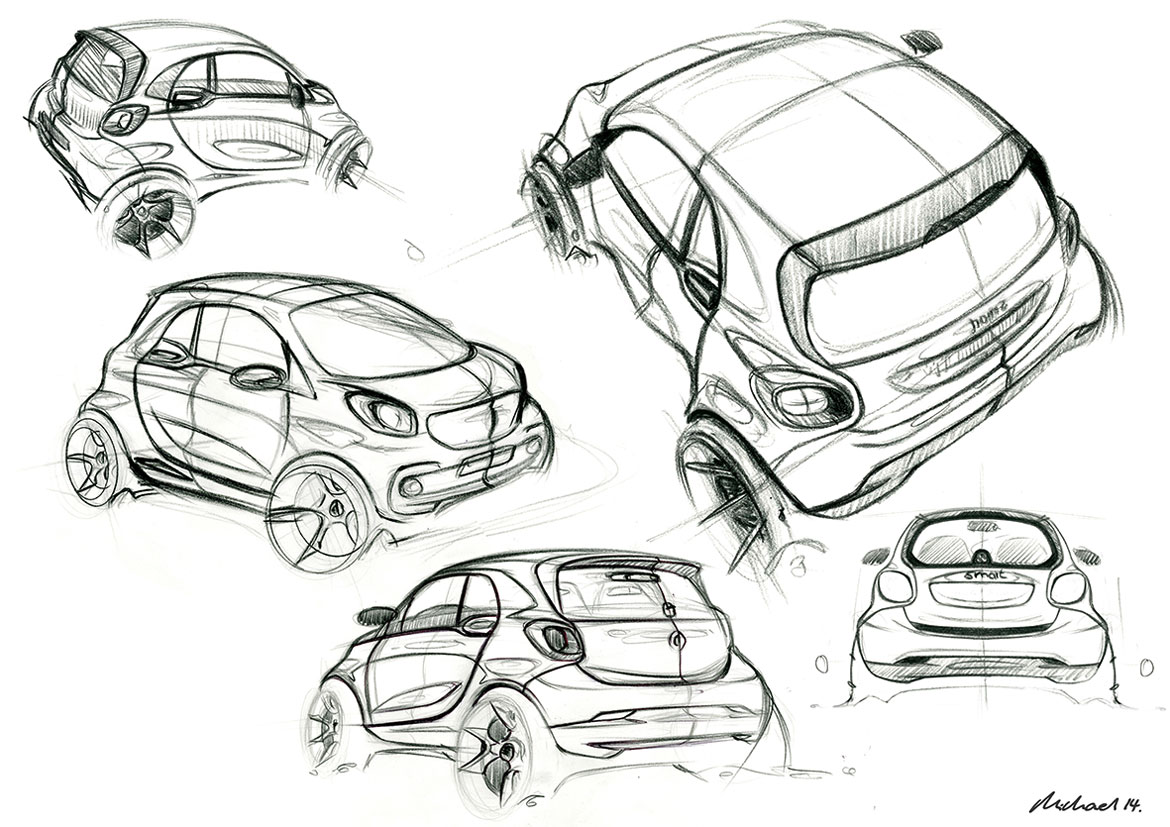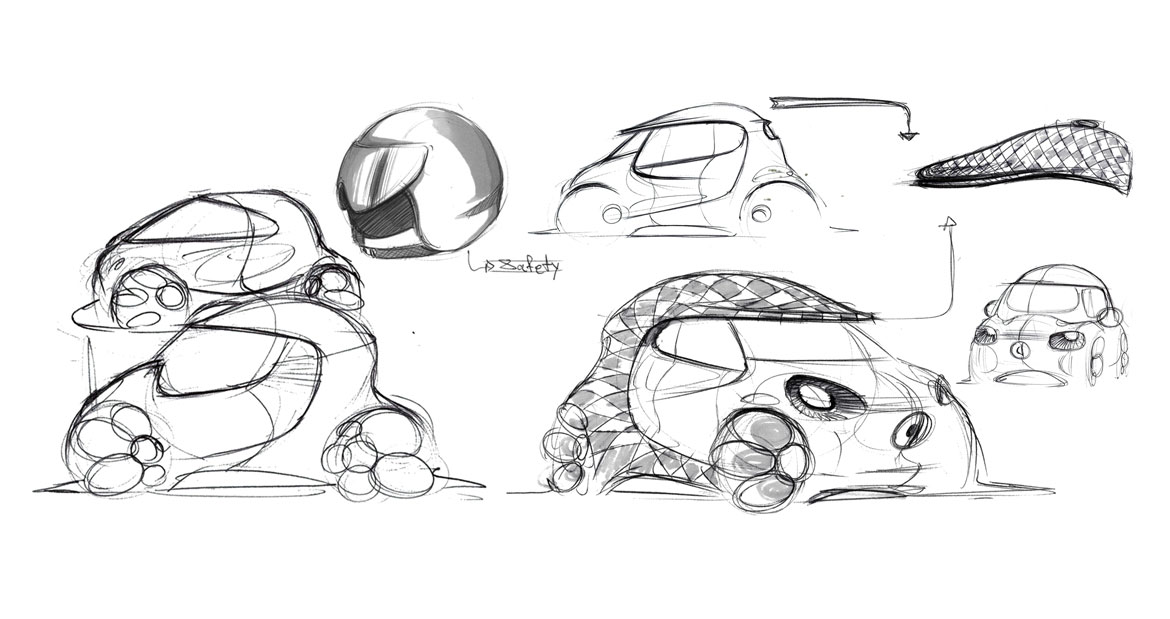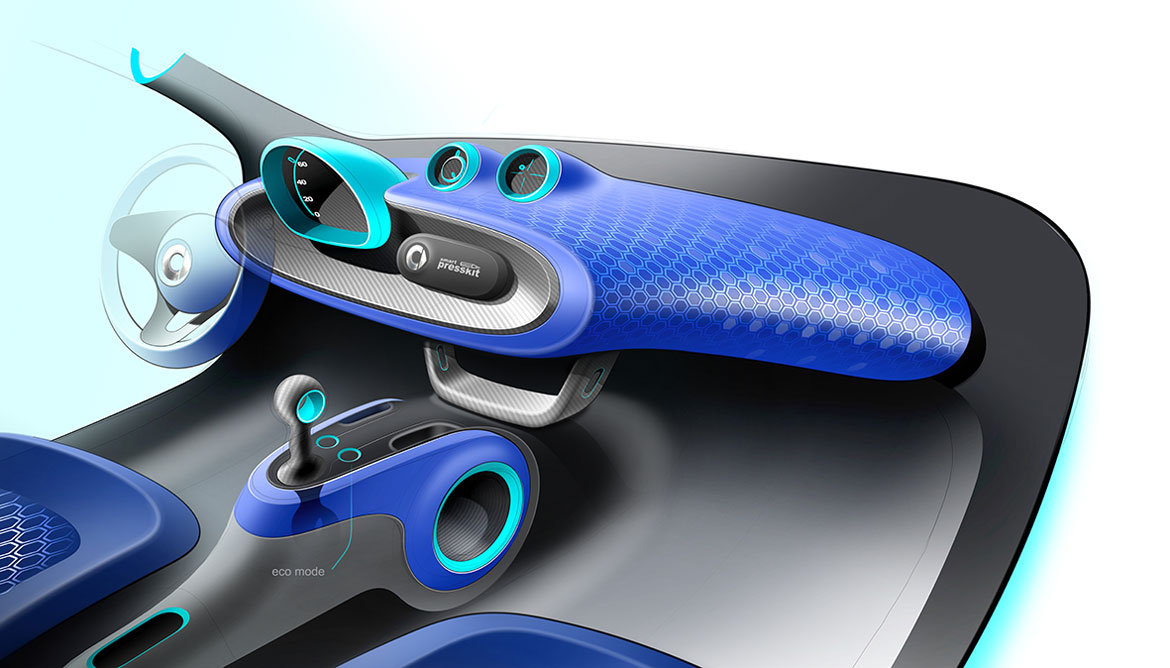Getting about town isn’t a matter of performance or speed but rather of nippiness and ingenuity. Qualities that have always distinguished the Smart and are reiterated in its third generation which comes in two innovative versions suitable for all needs: two seats and two doors for the Fortwo, and four doors and four seats for Forfour, the big sister.
The styling template is shared, intelligent and versatile though deployed over different dimensions (80 cm difference in length), with a sporty, energetic character made up of arching lines, a high bonnet and smooth curves.
“The new Smart is a synonym of FUN.ctional design”, explains Kai Sieber, head of brand design, “fun and functional because this car has always found its motivation in the coexistence of two opposing but fundamental poles, the heart and the brain, passion and reason”.

“This car is a synthesis of multiple features experimented in the concept cars we have proposed in recent years. We have extracted the genes of the new generation from the pure Dna of the showcars”, continues Sieber. “We have done a lot of work on this mix of features, often with Gorden Wagener (design vice-president of Daimler AG, ed.) who is always very much hands-on during the genesis of a new vehicle, particularly as regards the conceptual and philosophic part which underlies the whole design procedure”.
The new Smart is joyfully spirited and has a smiling face. “To define its expression we took our inspiration from the faces of children and we looked at loads of photos before finding the right one: a cheerful face that is also just a little bit cocky and mischievous too”, Kai Sieber goes on. “The front is characterised by slightly sloping eyes with a lower line pointing up the grille which is bigger and has a rounded design, like some kind of dimple”

As a result of the thicker C pillar, that fundamental element of the Smart concept, the Tridion, has also grown dimension-wise and now surrounds the rear lights, “another FUN.ctional solution in the spirit of the vehicle, and essential for both safety and aesthetics”.
Another typical, recurrent sign is the hexagon, recognisable in the graphics of the front grille – with a honeycomb pattern which gets smaller as it moves out, so adding three-dimensionality to the design, in the glass that covers the Led lights and direction indicators and in the cabin, on the outside of the door panel pockets and the tweeter cover.
The first impact with the interior is exciting, with the lively colours of the upholstery in mesh fabric inspired by the technical materials of sports footwear which highlight the car’s devil-may-care nature. The forms are sculptural and outline a surprisingly large space with the seats – wraparound and with integral head-restraints – in parallel and no longer slightly staggered as in the previous generation, a result of the increased width.

The dash is of even more contemporary design and consists of two sections, one upholstered in fabric and more external, the other with circular shapes in black or white plastic. By contrast the instruments and infotainment unit break out of their confines to produce an almost suspended effect.
There are innovative, almost playful, solutions too, like the small lens that adjusts to magnify the temperature gauge and enables it to be selected, or the invisible drawer concealed below the centre tunnel for tucking away valuables. “Every solution is underpinned by a bit of humour”, concludes Sieber.
The article continues in Auto & Design no. 210











